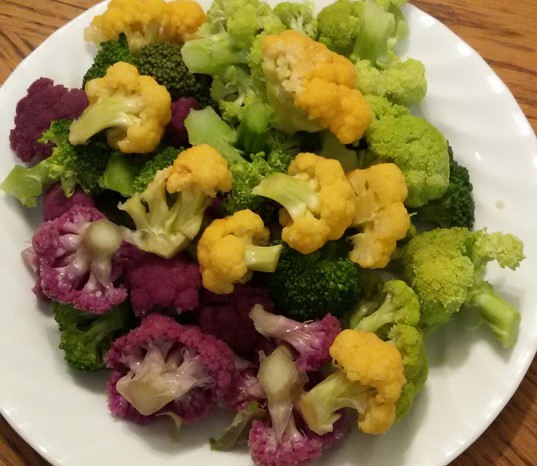Growing Unusual Vegetables – Presented by Karen Gardner, BCMG
Summary by Sherri McShane
October 2023

September’s Lunch and Learn was a fact-filled presentation on growing unusual vegetables shared by Karen Gardner, Bexar County Master Gardener. Karen enjoys experimenting with different vegetables in her own garden. She finds new and interesting vegetables and varieties to try in seed catalogs or from the produce section of her local supermarket. In this session she shared valuable information about several unique options.
Rhizomes
Examples: ginger, turmeric and galangal

Karen purchases ginger and turmeric rhizomes from her grocery store and plants them in her garden. These are warm season crops that prefer partial sun, and loose, moist soil – drip irrigation is best. The rhizome itself is the edible part of these plants. While she has not personally planted galangal, it is similar in requirements to ginger and turmeric and can typically be found at Asian markets.
Tubers

Example: sweet potato
Karen enjoys planting and trying the more exotic varieties, such as the blue sweet potato. This variety has a unique taste and texture. Sweet potatoes are grown from the slips that sprout on the potato. These slips can be pulled off and popped into the soil for planting. This plant is a warm season plant that prefers loose soil, morning sun, and drip irrigation. One can determine when the potatoes are ready to harvest from the foliage above ground.
Taro
This vegetable is grown from a corm which is a fleshy underground stem that acts as food storage for baby plants. NOTE: Taro is poisonous if not cooked; do not eat any part of the uncooked plant. This plant is a warm season plant that needs good rich soil, morning sun and moist soil.
Artichokes
Artichokes are both ornamental and edible. Seeds are started in mid-August and planted in mid-October so that it can grow throughout the winter. It needs to be protected from temperatures below 25 degrees F, and It does best in deep, fertile, well-drained soil and full sun.
Rhubarb
Rhubarb is another interesting winter annual. Only the stalks of the rhubarb plant should be eaten. Seeds should be started indoors in August and planted in late September/early October. Mulch with straw and protect from very cold temperatures. They like moist, well-drained soil and will grow in full sun to light shade.
Asparagus
For the patient person, asparagus is a perennial that takes 3 years to establish before you can harvest the stalks. It is best grown in trenches and should be mulched and composted well. These plants are harvested below ground so that no stubs remain above.
Horseradish
Horseradish is a fun crop to try. It is a root vegetable and cool weather crop. It grows best in deep, loose, well-drained soil. This vegetable is a bit tricky to preserve, but the flavor may be preserved by cutting it with mayonnaise.
Onions
The Egyptian Walking Onion was the last unusual vegetable shared by Karen. It is a cool weather crop that will tolerate various soils. An edible clove is formed at the top of the plant.

Edible flowers and herbs
While flowers aren’t unusual, it is interesting to use violas, nasturtiums, roses and borage in cooking. Karen encouraged attendees to use herbs in their cooking. There are many different varieties of standard herbs such as basil and oregano, that provide an entirely different flavor to recipes. For example, a colorful and delicious pesto can be made from the Balsamic Bloom Basil flowers.
Make plans to attend our October Lunch and Learn “Prop Swap” with Bill Swantner, BCMG at Noon on October 20th.
Additional Resources (scan QR Code below):

All photos (except as noted) by Author

